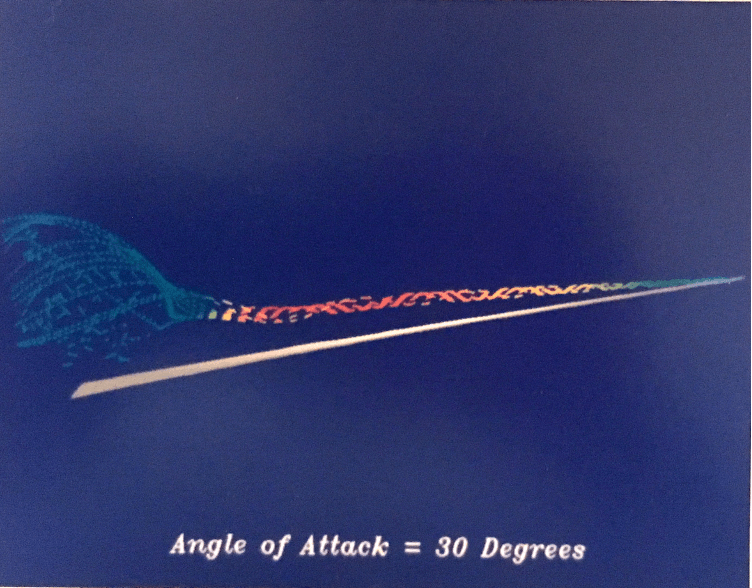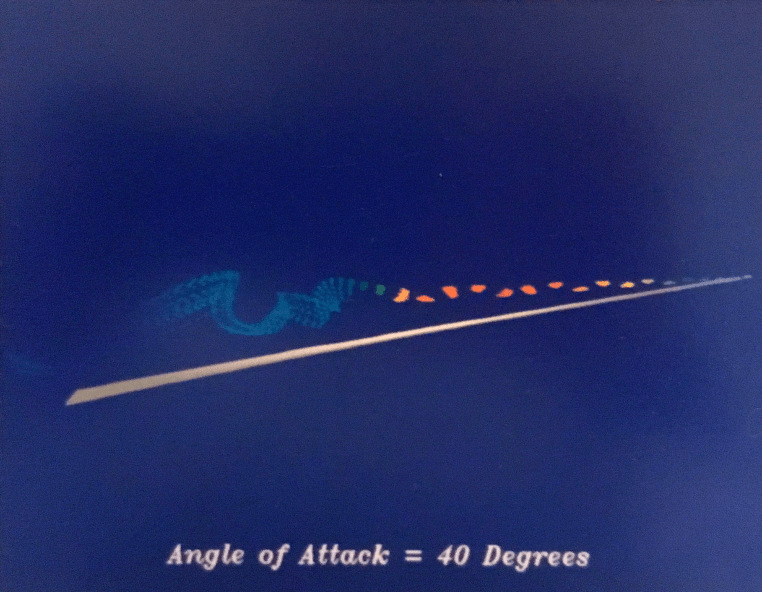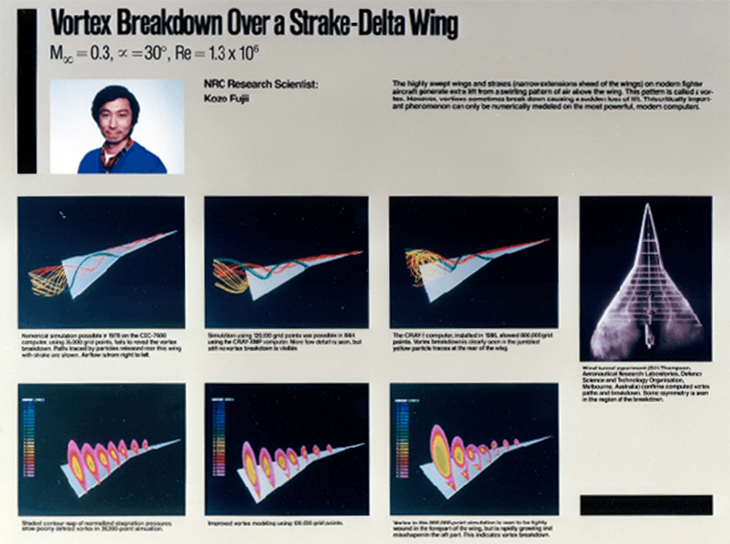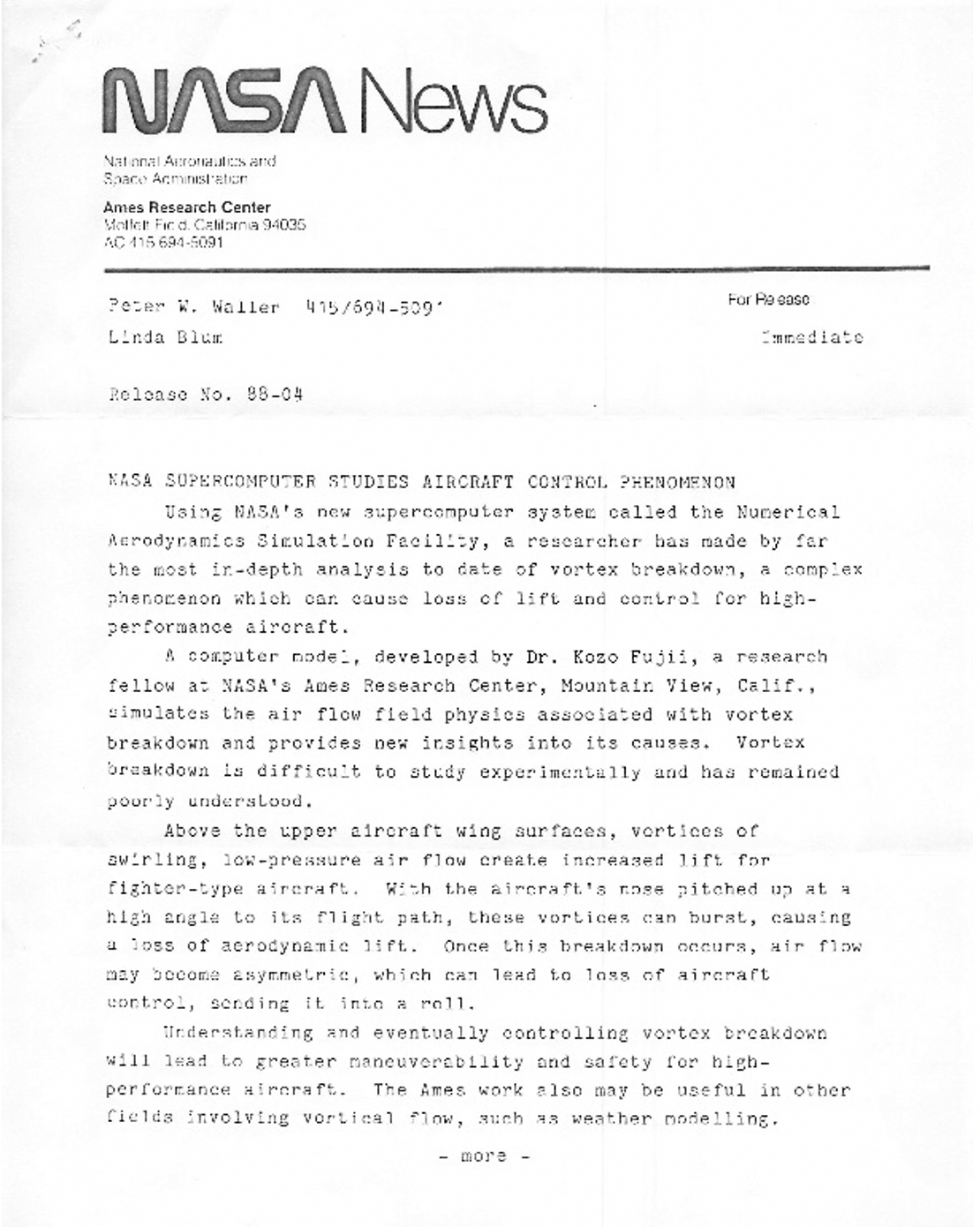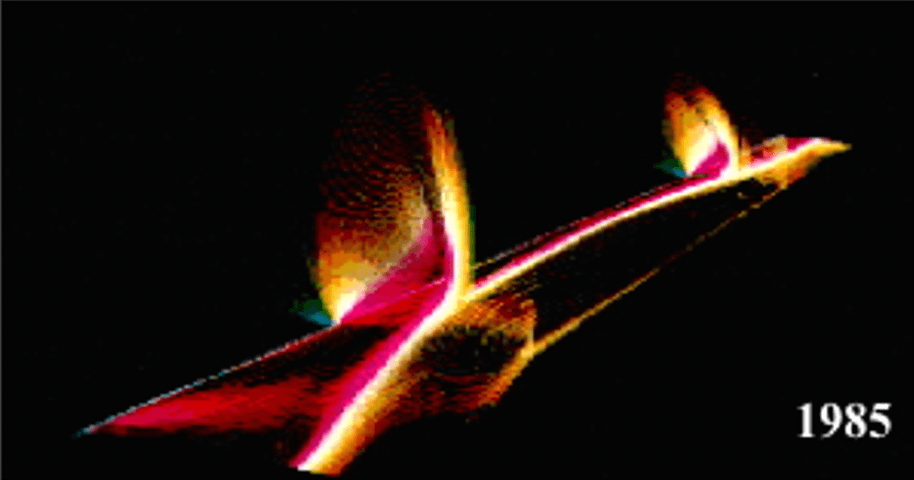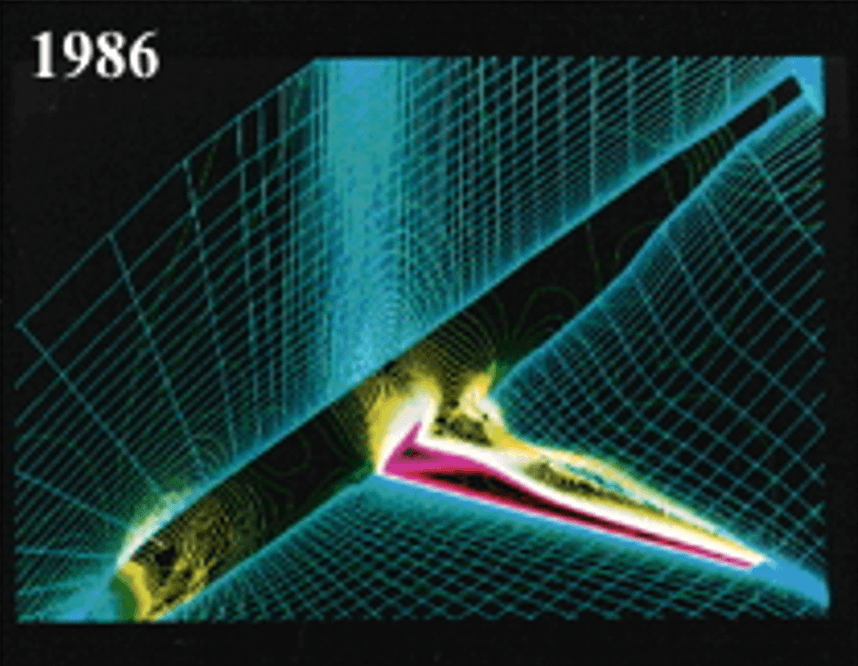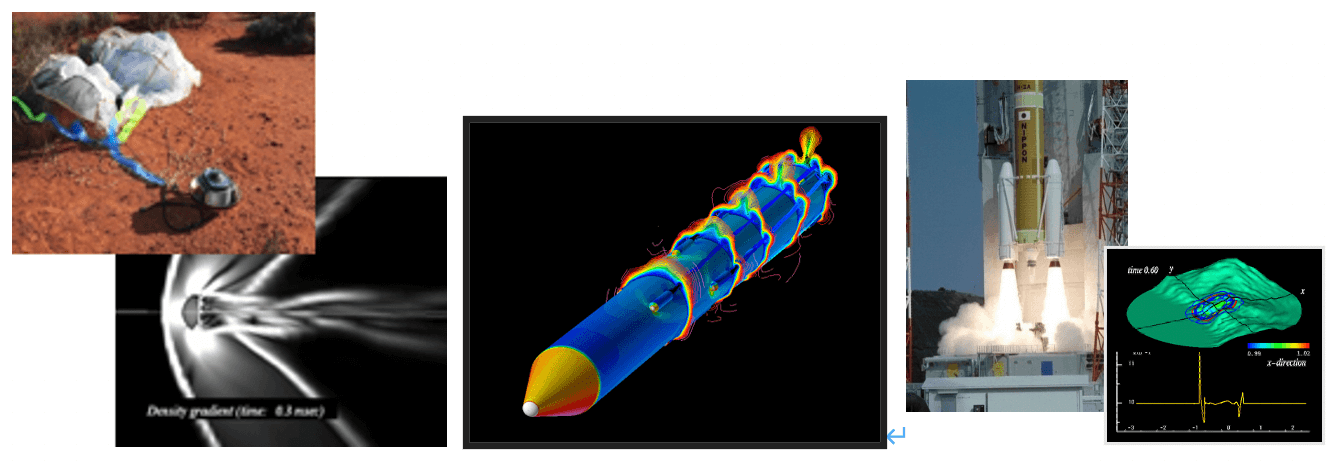Research in the past
Research for leading edge separation vortex over delta and double-delta wings

(1-1) First success of CFD (computational fluid dynamics) study for lift mechanism of delta-type wings
* This work showed that we can simulate leading-edge separation vortex over delta wings with Navier-Stokes equations first time in the world [AIAA Paper 83-1908, 84-1550, 85-1563]. Until then, only flows near the body surface was focused in aeronautics and this was the first attempt for such simulations. His study opened the door to complex flow simulations over supersonic transport or similar type aircraft at take-off and landing phases, which is common now. This was a very early work of CFD with emerging technology of supercomputers at that time. (1983-1985)
(1-2) First success of computer simulation of lift stall (vortex burst) of delta wings
* NASA Press Release 88-04. Two types of vortex bursting were successfully simulated. NASA considered this work as an important step for the study of aircraft control phenomenon and issued a Press Release (88-04) about this work [AIAA Paper 87-1229, International Journal of Numerical Methods in Fluids (1988), AIAA Journal (1989)]. Since it was one of the early works at NAS (Numerical Aerodynamic Simulation) system, the result was demonstrated as a main display at the main entrance of the NAS building for years. The AIAA gave him the “best aerospace image award” in AIAA 31st Aerospace Sciences meeting. The Press Release mentioned this study as “NASA supercomputer studies aircraft control phenomenon”. Aviation Week and Space Technology magazine also pick up this result in the section of vortex model in the “Industry Observer” in the issue of February 22, 1988. (1987 - 1989)
Simulations of leading-edge separation vortex over a delta wing (side view)
3ページあり
NASA Press release 88-04, February 1, 1988
Transonic flows over a practical wing and wing/fuselage
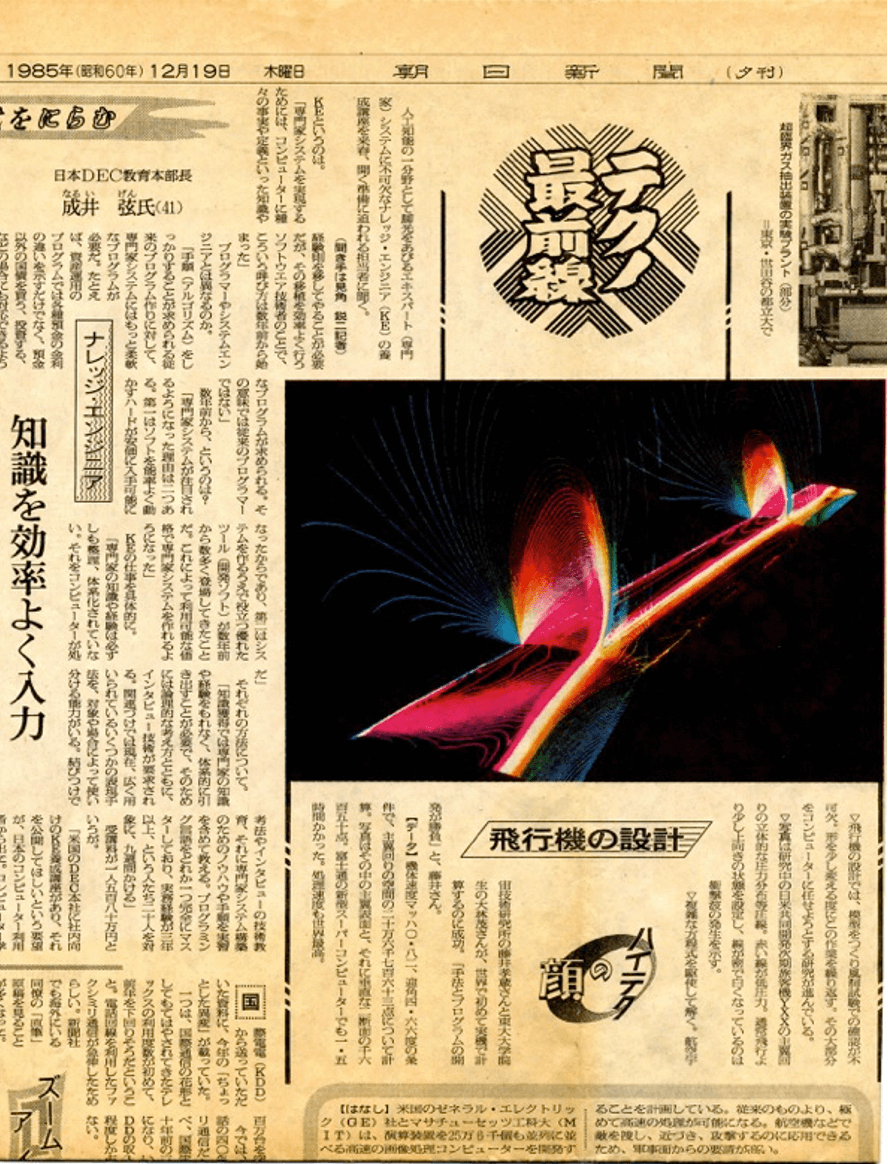
朝日新聞1985年12月19日
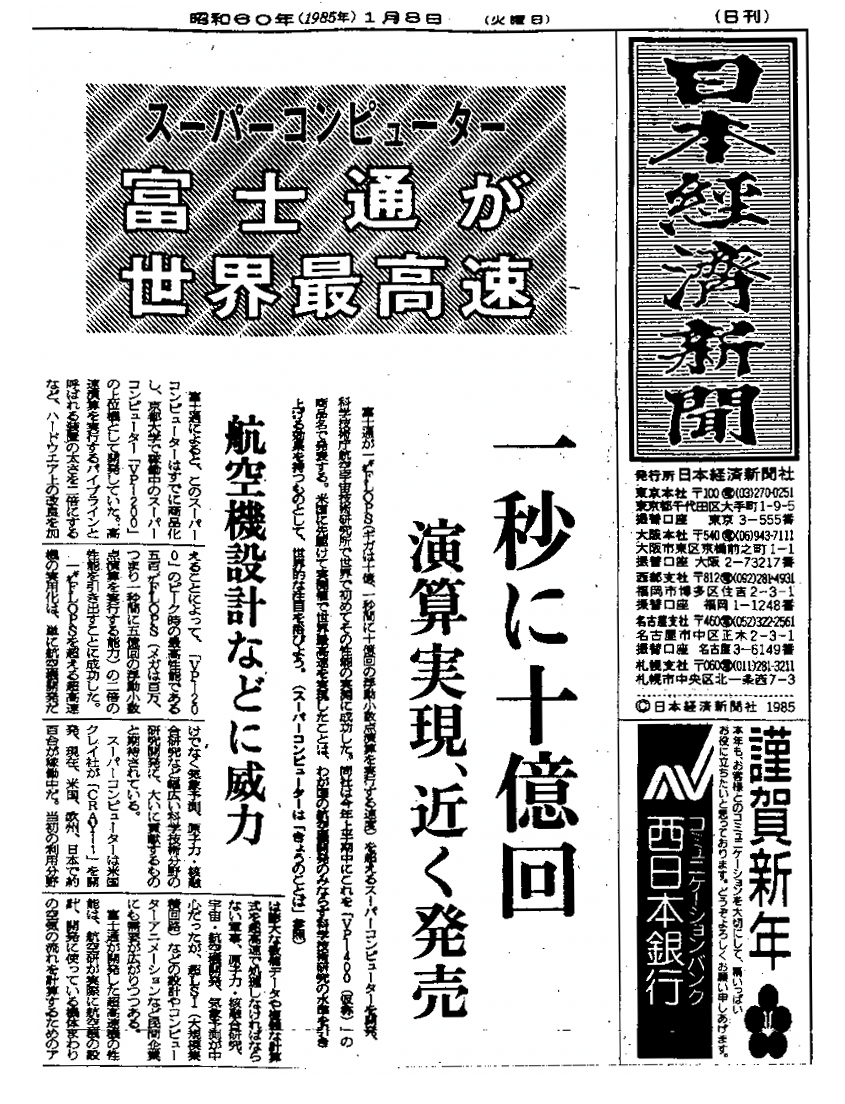
日経新聞 1985 年1月8日
Contributions to the design of Japanese Shinkansen high speed trains and coming Magnetic Levitation trains
Contributions to the design of Japanese Shinkansen high speed trains and coming Magnetic Levitation trains
The computer program LANS3D for aerospace application was extended and really used for the development of Japanese Shinkansen trains named 500, 700 series of Japan Railway Central and West. It is now under use for the development of Magnetic Levitation (Maglev) trains. Main objective was to reduce the booming noise in the tunnel and pressure fluctuations during crossing-over of trains passing by. The idea (Patent 06-238192) of “v-wall” theory that was developed with Dr. Takanobu Ogawa was also used (and is still under use) for their developments. The simulation software and the multi-objective optimization techniques that he developed with his colleagues and students were heavily used now for the geometry design of front cars of the Maglev train, which will appear in 2027 for public use. All his contributions with CFD were cited in the “White Paper of Science and Technology” published by the Japanese government in 2016. Unfortunately, there were little publications about this work since all the study result was confidential. However, Takanori Maema spent almost one chapter for showing Dr. Fujii’s contributions, in his book (in Japanese) entitled “people that changed Shinkansen to aircraft”. A public TV program that featured maglev train development also showed his contribution in its 30-minutes program. (1990-present)

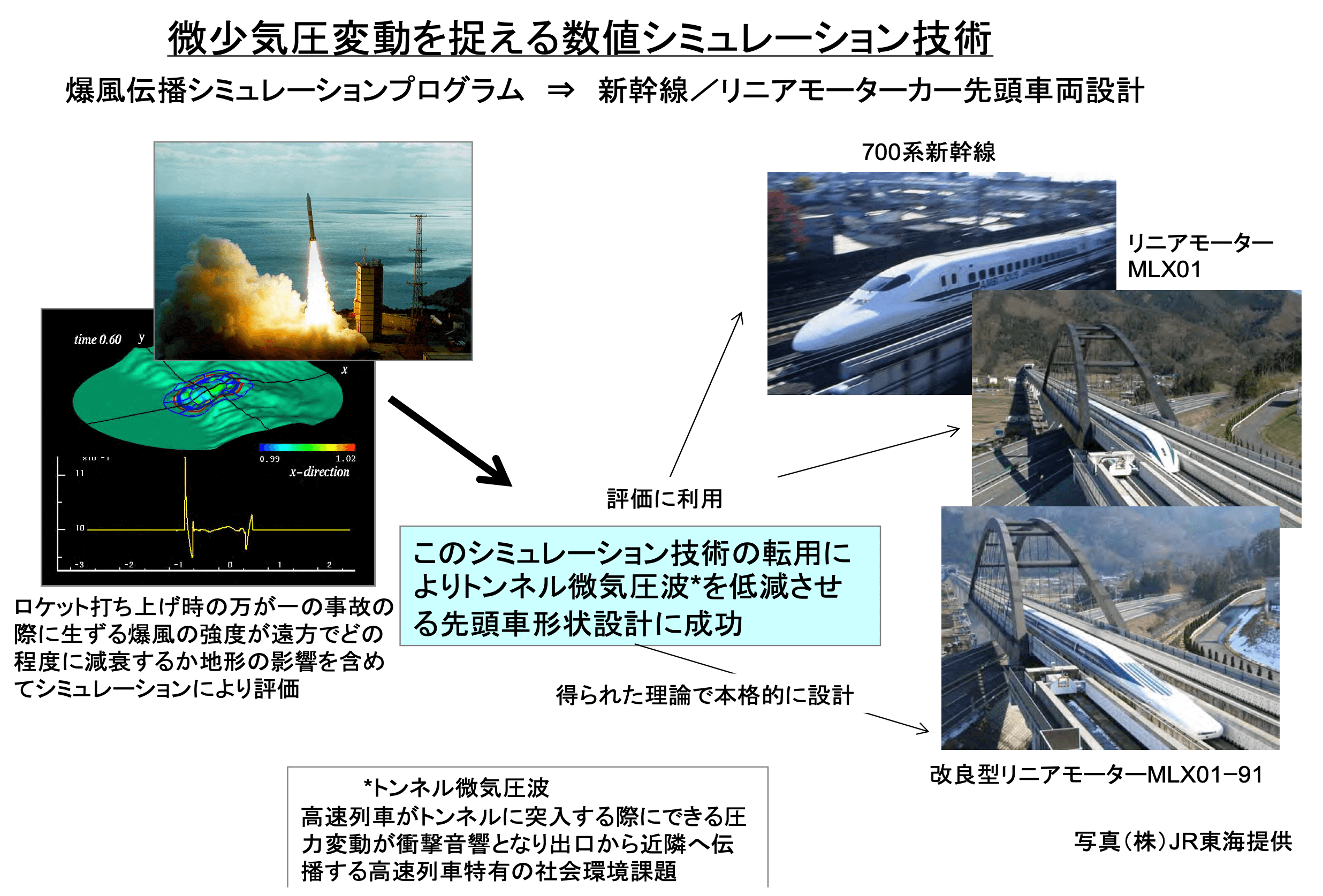

Development of efficient and robust computational algorithms for compressible flow simulations
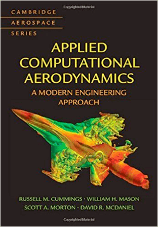 LU-ADI solution method [AIAA J. 1986] that he developed with Shigeru Obayashi (at that time, ph. D. student and now the director of Institute of Fluid Science, Tohoku University) was used by many researchers in Japan for many years. Some of the researchers in Stanford university [AIAA Paper 88-2558, 89-034], researchers in Bombardier Aerospace in Canada used this method for their analysis, researchers in NASA Armstrong (Dryden) Flight Center used Prof. Fujii’s software for the analysis of X-series for a while, researchers in TUSAS Aerospace Industries and Istanbul University in Turkey still now use his LANS3D software [J. Aircraft, Vol. 30, 1993 and else]. There are numbers of algorithm studies since then [JCP, 1995 and others]. He authored or co-authored 8 JCP (Journal of Computational Physics) and 5 C&F (Computers & Fluids) journal articles for numerical algorithms. His Japanese book on numerical methods in CFD sells almost 10,000 volumes until now with 9th Prints in 2017.
LU-ADI solution method [AIAA J. 1986] that he developed with Shigeru Obayashi (at that time, ph. D. student and now the director of Institute of Fluid Science, Tohoku University) was used by many researchers in Japan for many years. Some of the researchers in Stanford university [AIAA Paper 88-2558, 89-034], researchers in Bombardier Aerospace in Canada used this method for their analysis, researchers in NASA Armstrong (Dryden) Flight Center used Prof. Fujii’s software for the analysis of X-series for a while, researchers in TUSAS Aerospace Industries and Istanbul University in Turkey still now use his LANS3D software [J. Aircraft, Vol. 30, 1993 and else]. There are numbers of algorithm studies since then [JCP, 1995 and others]. He authored or co-authored 8 JCP (Journal of Computational Physics) and 5 C&F (Computers & Fluids) journal articles for numerical algorithms. His Japanese book on numerical methods in CFD sells almost 10,000 volumes until now with 9th Prints in 2017.
Lasting contributions to space engineering and space science
There are numbers of contributions, among which two examples are presented. His numerical analysis of the design of the reentry capsules [AIAA J. Vol. 39, No. 4, AIAA J. Vol. 40, No. 12, 2002, co-autors]] resulted in the success of sample return space science project “Hayabusa” launched in 2003 and returned to earth in 2010. Samples of Asteroid named “Itokawa” returned to the earth by the small reentry capsule they developed. He was one of the recipients of the “Award for Excellent Applications” from the Japan Society of Fluid Mechanics.
The other example is his contribution to estimation of rocket plume acoustics. He initiated this analysis firstly in the world with high-fidelity simulation program, contributed to the design of launching site design of HII-A and HII-B rockets. The group he established for this problem successfully estimated reducing acoustics in 13 dB with their design of the launching pad of the solid rocket named “Epsilon” in 2013.
Lasting contributions to the development of flow visualization software
The software named “POST-KUN” is now used by over 100 user groups not only in the aerospace field but also for electric and astrophysics fields in Japan. Some of his ideas were implemented in the commercial software like “Fieldview” (1988-). BusinessWeek magazine picked up his comments on the flow visualization in the November issue of 1990. The magazine “Computers and Physics” of American Society of Physics introduced his activities in Jul/Aug. issue in 1992.


